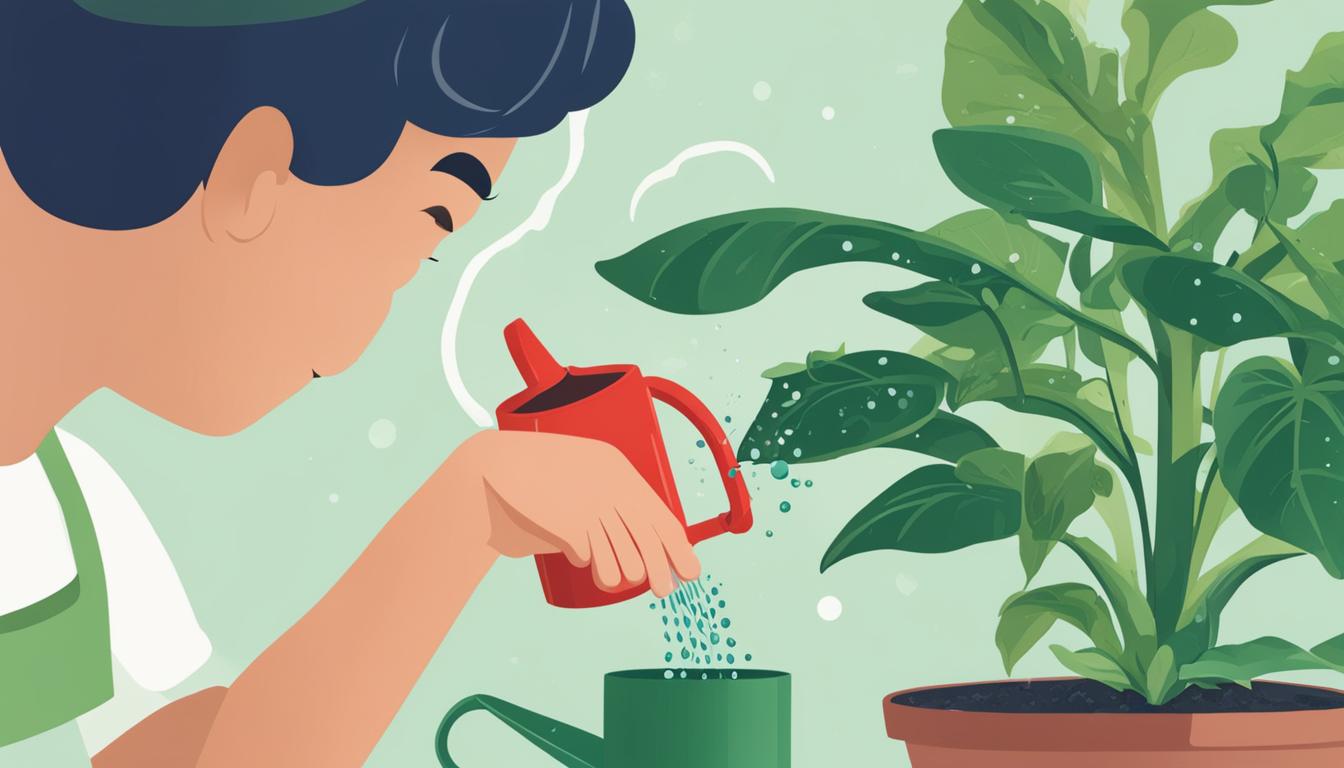
When it comes to caring for indoor plants, there are often numerous myths and misconceptions that can lead to confusion. It’s important to separate fact from fiction to ensure your plants thrive and flourish.
In this article, we will debunk some of the most common myths surrounding indoor plant care, providing you with factual information and dispelling any misconceptions.
Let’s explore the truth behind these myths so you can confidently care for your indoor plants.
Key Takeaways:
- Don’t believe everything you hear about indoor plant care – many common myths are easily debunked.
- Overwatering can actually harm your houseplants, so it’s important to find the right balance.
- Choosing the right pot size is crucial for plant growth – bigger pots don’t always mean better.
- Caring for indoor plants is a skill that can be developed, regardless of your natural “green thumb.”
- Misting plants alone is not enough to maintain adequate humidity levels.
Myth: You should water your houseplants constantly
One of the most common misconceptions about indoor plant care is that plants need to be watered constantly. However, this belief couldn’t be further from the truth.
Overwatering your houseplants can actually be harmful to their health. When soil is constantly saturated, it can lead to root rot, which deprives the plant of oxygen and nutrients.
Also, overwatering makes it difficult for the plant’s roots to absorb water effectively, causing the plant to suffer.
To avoid overwatering, it’s important to understand the watering needs of your specific houseplants. Factors such as the type of plant, pot size, and environmental conditions all play a role in determining how often you should water.
A good rule of thumb is to check the moisture level of the soil before watering again. Stick your finger about an inch deep into the soil – if it feels dry, it’s time to water.
If it’s still moist, hold off on watering for a few more days. This simple technique can help prevent overwatering and ensure that your houseplants thrive.
Proper watering techniques for indoor plants
Here are some additional tips to keep in mind when it comes to watering your indoor plants:
- Use a well-draining potting mix: Opt for a potting mix that allows excess water to drain out easily. This prevents water from pooling at the bottom of the pot, leading to root rot.
- Water from the bottom: Instead of watering from the top, consider placing your potted plants in a tray or saucer filled with water. This allows the roots to absorb water as needed without the risk of overwatering.
- Adjust watering frequency based on seasons: Plants may require more frequent watering during hot, dry summers, and less during cooler months. Adjust your watering schedule accordingly to accommodate seasonal changes.
- Consider using a moisture meter: If you’re unsure about the moisture level of your soil, a moisture meter can be a helpful tool. It provides an accurate reading of soil moisture, taking the guesswork out of watering.
| Plant | Watering Frequency |
|---|---|
| Succulents and cacti | Water sparingly, allowing the soil to dry out completely between waterings. |
| Tropical plants | Water when the top inch of soil feels dry. |
| Low-light plants | Water moderately, ensuring that the soil is evenly moist but not waterlogged. |
| Herbs | Water when the top inch of soil feels dry, but avoid overwatering. |
By understanding the needs of your houseplants and following proper watering techniques, you can avoid overwatering and provide the optimal conditions for plant growth. Remember, when it comes to watering, it’s all about finding the right balance.
Myth: Plants grow bigger in bigger pots
One common misconception in indoor plant care is the belief that plants will grow bigger if they are placed in bigger pots. However, this is a myth that needs to be debunked.
The size of the pot does not directly determine the growth of indoor plants. In fact, using pots that are too large can have negative consequences for your plants.
When plants are placed in pots that are too big, it can lead to overwatering. The excess soil retains water for longer periods, causing the roots to become waterlogged.
This can lead to root rot and other issues that can stunt the growth of your plants. It’s important to choose the right pot size for your indoor plants to ensure their health and well-being.
So, how do you choose the right pot size for your indoor plants? One general rule of thumb is to choose a pot that is only slightly larger than the current root ball of your plant.
This allows for proper drainage and prevents overwatering. If your plant has outgrown its current pot, you can gradually increase the pot size as the plant grows. This will give the roots room to expand without overwhelming them with too much soil or water.
| Pot Size | Plant Growth |
|---|---|
| Too Small | Roots become crowded, restricting growth |
| Just Right | Healthy root development and optimal growth |
| Too Big | Excess soil holds too much water, leading to root rot |
Remember, choosing the right pot size is just as important as providing the right amount of water, light, and nutrients for your indoor plants. By debunking this myth and understanding the importance of pot size, you can ensure the health and growth of your indoor plant collection.
Myth: If you don’t have a green thumb, you can’t keep plants alive

Contrary to popular belief, you don’t need to be born with a green thumb to successfully care for indoor plants. As a beginner, it’s natural to have concerns about your ability to keep plants alive and thriving. However, with some basic knowledge and plant parenting skills, anyone can develop the ability to care for indoor plants effectively.
Indoor plant care for beginners starts with understanding the specific needs of your plants. Each plant has different light, watering, and feeding requirements.
By researching and selecting easy-to-care-for plants, you can set yourself up for success. Some great options for beginners include pothos, snake plant, and peace lily, which are known for their resilience and adaptability.
When it comes to indoor plant care, consistency is key. Establish a regular watering schedule based on the moisture needs of your plants. Avoid overwatering or underwatering, as both can be detrimental to plant health. Additionally, provide your plants with adequate light, whether it’s natural light or artificial grow lights, and ensure proper drainage in their pots.
Remember that caring for indoor plants is a continuous learning process. Take the time to observe your plants, learn from any mistakes, and make adjustments as needed. With patience and practice, you’ll gain confidence in your plant parenting skills and enjoy the beauty and benefits of a thriving indoor garden.
| Plant Parenting Skills | Indoor Plant Care Tips for Beginners |
|---|---|
| Research your plants | Learn about the specific needs of your plants, including light requirements, watering frequency, and temperature preferences. This will help you provide the ideal environment for your plants to thrive. |
| Start with easy-to-care-for plants | Choose plants that are known for their resilience and adaptability. Pothos, snake plant, and peace lily are great options for beginners. |
| Establish a watering schedule | Develop a consistent watering routine based on the moisture needs of your plants. Avoid overwatering or underwatering, as both can harm your plants. |
| Provide adequate light | Ensure your plants receive the right amount of light, whether it’s natural or artificial. Adjust the placement of your plants accordingly to meet their light requirements. |
| Observe and learn | Take the time to observe your plants and learn from any signs of stress or nutrient deficiencies. Make adjustments to your care routine as needed to keep your plants healthy. |
Myth: Misting plants increase humidity
One common misconception that many indoor plant owners have is that misting their plants will effectively increase humidity levels.
While misting can create a temporary increase in humidity in the immediate vicinity of the plant, it is not a reliable method for maintaining optimal humidity levels consistently.
The truth is that most indoor plants require specific humidity levels to thrive, and misting alone may not be sufficient to meet their needs.
Misting plants may create a temporary increase in humidity, but it is not an effective method for maintaining proper humidity levels for most indoor plants.
Some indoor plants come from tropical environments where humidity is naturally high, and misting alone may not be enough to recreate those conditions. These plants may require additional measures such as using a humidifier or placing a tray of water near them to achieve the ideal humidity level.
It is important to understand the specific humidity requirements of your indoor plants and take appropriate measures to meet them.
This can include researching the native conditions of your plants, monitoring humidity levels with a hygrometer, and adjusting the environment accordingly.
For example, if your plants require higher humidity, you can group them together to create a microclimate or use a humidifier to increase humidity levels in the room.
| Myth: Misting plants increase humidity | Facts: |
|---|---|
| Misting plants may create a temporary increase in humidity, but it is not an effective method for maintaining proper humidity levels for most indoor plants. | Most indoor plants require specific humidity levels to thrive, and misting alone may not be sufficient to meet their needs. |
| It is important to understand the specific humidity requirements of your indoor plants and take appropriate measures to meet them. | Research the native conditions of your plants, monitor humidity levels, and adjust the environment accordingly. |
In conclusion, misting plants may provide a brief boost in humidity, but it is not a reliable method for maintaining optimal humidity levels for most indoor plants.
To ensure the well-being of your plants, it is crucial to understand their specific humidity requirements and implement appropriate measures to create a suitable environment.
Myth: Plants are not safe for kids or pets
There is a common misconception that indoor plants are not safe for households with children or pets. While it is true that certain plants can be toxic if consumed, it’s important to note that not all plants pose a danger to your loved ones.
By choosing the right houseplants, you can create a safe and enjoyable environment for everyone in your home.
To ensure the safety of your children and pets, it’s crucial to be aware of which plants are toxic and keep them out of reach.
Some common indoor plants that are toxic include pothos, lilies, and certain types of ferns. However, there are plenty of child and pet-friendly houseplants available that can bring beauty and health benefits to your home.
Here are some examples of child and pet-friendly houseplants:
- Spider Plant (Chlorophytum comosum)
- African Violet (Saintpaulia spp.)
- Areca Palm (Dypsis lutescens)
- Money Tree (Pachira aquatica)
- Boston Fern (Nephrolepis exaltata)
These plants are not only non-toxic but also have air-purifying properties, making them a great addition to any home. However, it’s important to remember that even non-toxic plants can still cause discomfort if consumed in large quantities, so it’s best to monitor your children and pets around indoor plants.
Table: Common toxic indoor plants
| Plant | Toxicity |
|---|---|
| Pothos | Mild to moderate |
| Lilies | High |
| Dieffenbachia | Moderate to severe |
| Philodendron | Mild to moderate |
Remember to always research the toxicity of a plant before bringing it into your home. By choosing child and pet-friendly houseplants and keeping toxic plants out of reach, you can create a safe and inviting space for your entire family to enjoy.
Myth: Indoor plants need a lot of direct sunlight
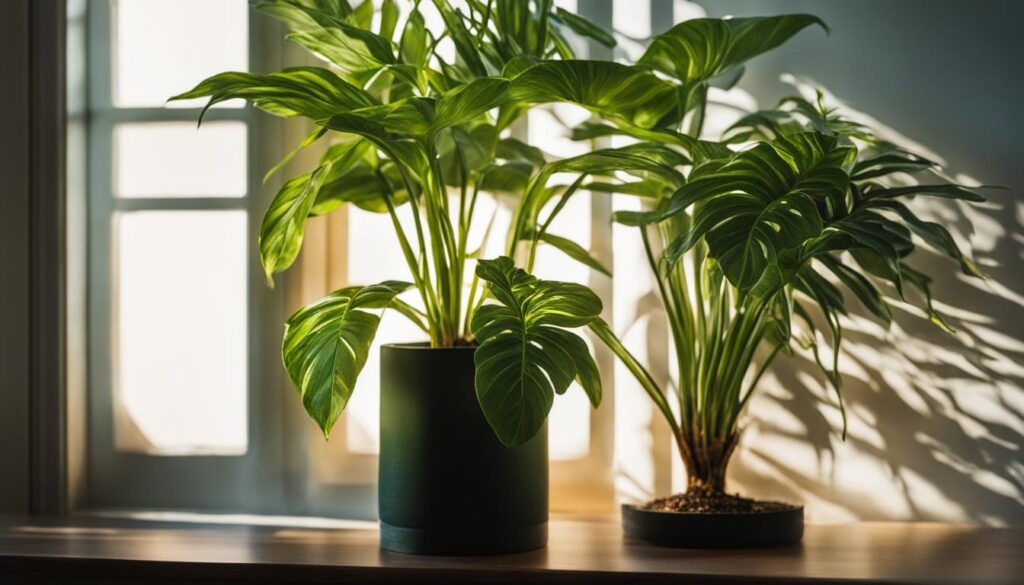
One common misconception about indoor plants is that they require a significant amount of direct sunlight to thrive. While it is true that some plants do well in bright, sunny conditions, many indoor plants can actually thrive in lower light environments. Understanding the lighting requirements of your indoor plants is essential to ensure their health and growth.
Indoor plants can be categorized into three main groups based on their light requirements:
- Low light plants: These plants can tolerate and even thrive in areas with little to no direct sunlight. They are ideal for spaces with limited natural light, such as offices or rooms with small windows. Examples of low light plants include snake plants, pothos, and ZZ plants.
- Medium light plants: These plants require moderate levels of indirect sunlight. They can tolerate some direct sunlight but prefer bright, filtered light for a few hours each day. Spider plants, peace lilies, and philodendrons are examples of medium light plants.
- High light plants: These plants thrive in bright, direct sunlight and need several hours of exposure each day. They should be placed near a south or west-facing window where they can receive the most sunlight. Some examples of high light plants include succulents, cacti, and certain types of palms.
When determining the light requirements for your indoor plants, it’s essential to consider factors such as the direction and intensity of sunlight in your space, as well as the specific needs of each plant.
Observing how your plants respond to their current lighting conditions can also help you gauge whether they need more or less light.
| Plant Type | Light Requirements | Examples |
|---|---|---|
| Low light plants | Tolerate low light conditions | Snake plants, pothos, ZZ plants |
| Medium light plants | Require moderate light levels | Spider plants, peace lilies, philodendrons |
| High light plants | Need bright, direct sunlight | Succulents, cacti, certain palms |
Myth: Yellow leaves mean overwatering
One common misconception in indoor plant care is that yellow leaves always indicate overwatering. While overwatering can certainly cause yellowing leaves, it is not the only possible cause.
There are several factors that can contribute to leaf discoloration in indoor plants, and it’s important to diagnose the issue accurately to provide the appropriate care.
Yellow leaves can also be a result of inadequate light, nutrient deficiencies, or even pests. Before assuming overwatering as the cause, it’s essential to assess other potential factors that may be affecting the health of your plants.
This could involve examining the lighting conditions, checking for signs of pests, or considering if the plant needs additional nutrients.
If you suspect overwatering is the culprit, there are several signs to look for. In addition to yellowing leaves, overwatered plants may have soggy soil, a musty smell, or even mold growth.
To remedy the situation, it’s important to adjust your watering routine and ensure that the plant’s roots have adequate drainage. You may also need to adjust the frequency and amount of water you provide based on the specific needs of your plant.
Common Causes of Yellow Leaves on Indoor Plants:
- Overwatering
- Inadequate light
- Nutrient deficiencies
- Pest infestation
By understanding the various causes of yellowing leaves and taking the necessary steps to address the specific issue, you can help your indoor plants thrive and maintain their overall health and appearance.
| Cause | Symptoms | Solution |
|---|---|---|
| Overwatering | Yellow, wilting leaves; soggy soil; musty smell; mold growth | Adjust watering routine; ensure proper drainage; monitor soil moisture |
| Inadequate light | Yellowing, weak leaves; elongated stems | Provide brighter light; adjust plant placement |
| Nutrient deficiencies | Yellow leaves with brown spots; stunted growth | Use a balanced fertilizer; provide necessary nutrients |
| Pest infestation | Yellowing leaves with visible pests or webs | Treat pests with appropriate insecticides or natural remedies |
Remember, yellow leaves on indoor plants are not always an indication of overwatering alone. Taking the time to properly diagnose the issue and address the underlying cause will help ensure the continued health and vitality of your indoor plant collection.
Myth: Indoor plants need fertilizers for growing
As we dive deeper into the care of indoor plants, it’s important to address the common misconception that indoor plants absolutely require fertilizers to thrive.
While it is true that fertilizers can provide additional nutrients for plant growth, they are not the sole determining factor for a plant’s success.
Indoor plants have specific nutrient requirements, just like any other living organism. Water, sunlight, and fresh air are essential components of their growth, but fertilizers can supplement these needs.
Fertilizers provide essential nutrients such as nitrogen, phosphorus, and potassium, which aid in plant development and overall health.
However, it’s crucial to understand that over-fertilizing can be detrimental to indoor plants. Excessive use of fertilizers can cause nutrient burn, resulting in yellowing leaves or stunted growth.
It’s important to follow the recommended dosage and frequency specified for each type of fertilizer and plant species.
Indoor plant owners should also consider the specific nutrient requirements of their plants. Some plants may require more or less of certain nutrients, depending on their natural habitat or growth stage.
Consulting plant care resources or seeking advice from horticultural experts can help determine the appropriate fertilizing regimen for your particular plants.
FAQ
What are common myths debunked about indoor plant care?
In this section, we explore and debunk common myths and misconceptions surrounding the care of indoor plants. We provide factual information and data obtained from various sources to shed light on the truth behind these myths.
Myth: You should water your houseplants constantly
Contrary to popular belief, constantly watering your houseplants can actually be detrimental to their health. Overwatering can lead to root rot and make it difficult for the plants to absorb nutrients from the soil. We provide information on proper watering techniques and how to avoid overwatering.
Myth: Plants grow bigger in bigger pots
The size of the pot does not determine the growth of indoor plants. In fact, using pots that are too large can lead to overwatering and root rot. We discuss the importance of choosing the right pot size for indoor plants and provide guidelines for repotting.
Myth: If you don’t have a green thumb, you can’t keep plants alive
You don’t need to be born with a green thumb to successfully care for indoor plants. With basic information and guidance, anyone can develop the skills to care for plants. We provide tips and resources for beginners to learn how to care for their plants effectively.
Myth: Misting plants increase humidity
Misting plants may create a temporary increase in humidity, but it is not an effective method for maintaining proper humidity levels for most indoor plants. We explain the role of misting in plant care and provide alternative methods for increasing humidity.
Myth: Plants are not safe for kids or pets
While it is true that some indoor plants can be toxic if consumed, not all plants pose a danger to kids or pets. We identify common toxic indoor plants and provide information on safe plant choices for households with children and pets.
Myth: Indoor plants need a lot of direct sunlight
While some indoor plants thrive in direct sunlight, not all plants require a lot of sun exposure. We discuss the varying light requirements of different indoor plants and provide guidelines for proper placement to ensure optimal growth.
Myth: Yellow leaves mean overwatering
Yellowing leaves on indoor plants can be caused by various factors, including overwatering, inadequate light, nutrient deficiencies, and more. We provide information on how to diagnose the cause of yellowing leaves and appropriate solutions for each situation.
Myth: Indoor plants need fertilizers for growing
While water, sunlight, and fresh air are essential for plant growth, indoor plants can benefit from fertilizers to provide necessary nutrients. However, it is important to understand the right dosage and frequency of fertilizing to prevent nutrient burn and other issues. We discuss the role of fertilizers in indoor plant care and provide guidelines for proper fertilizing practices.

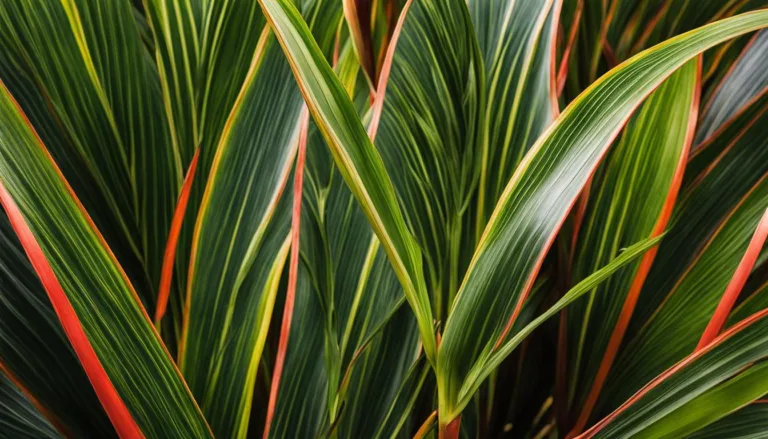
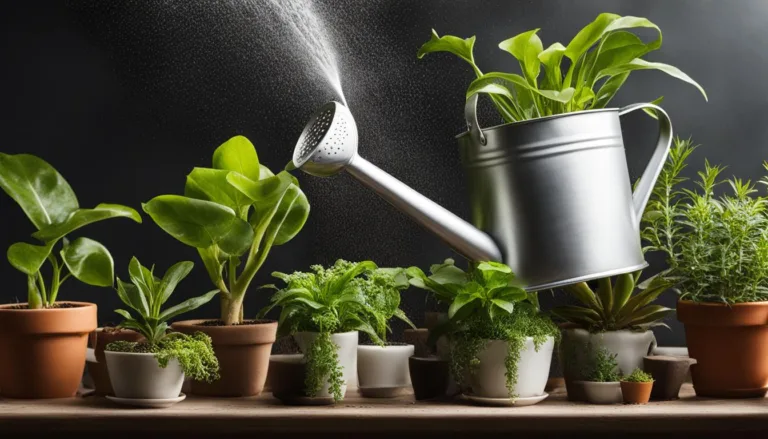
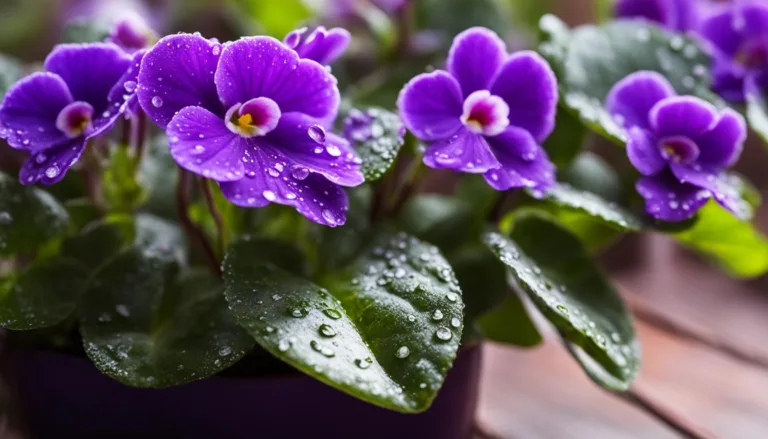
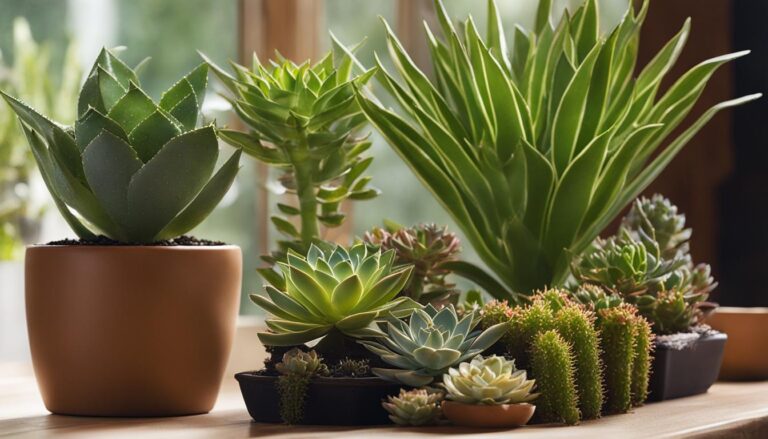
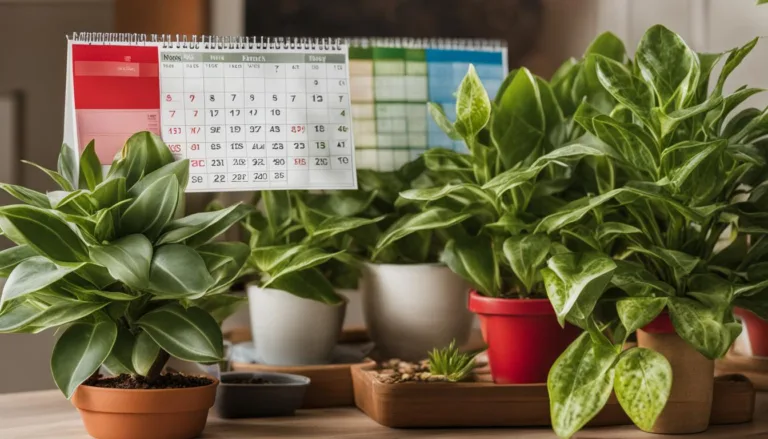
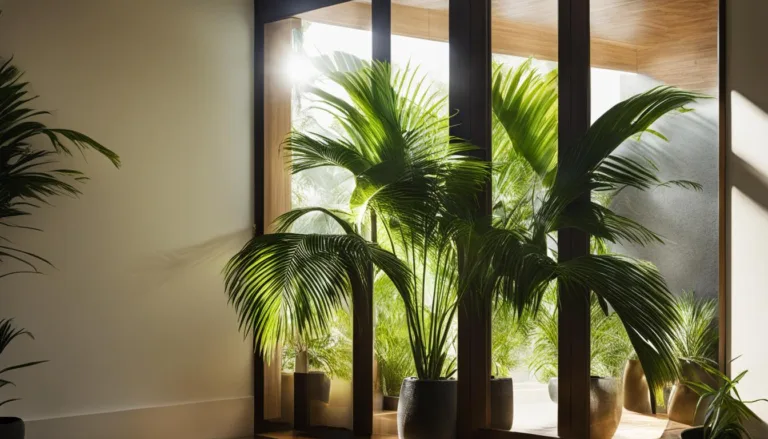
2 Comments
Comments are closed.